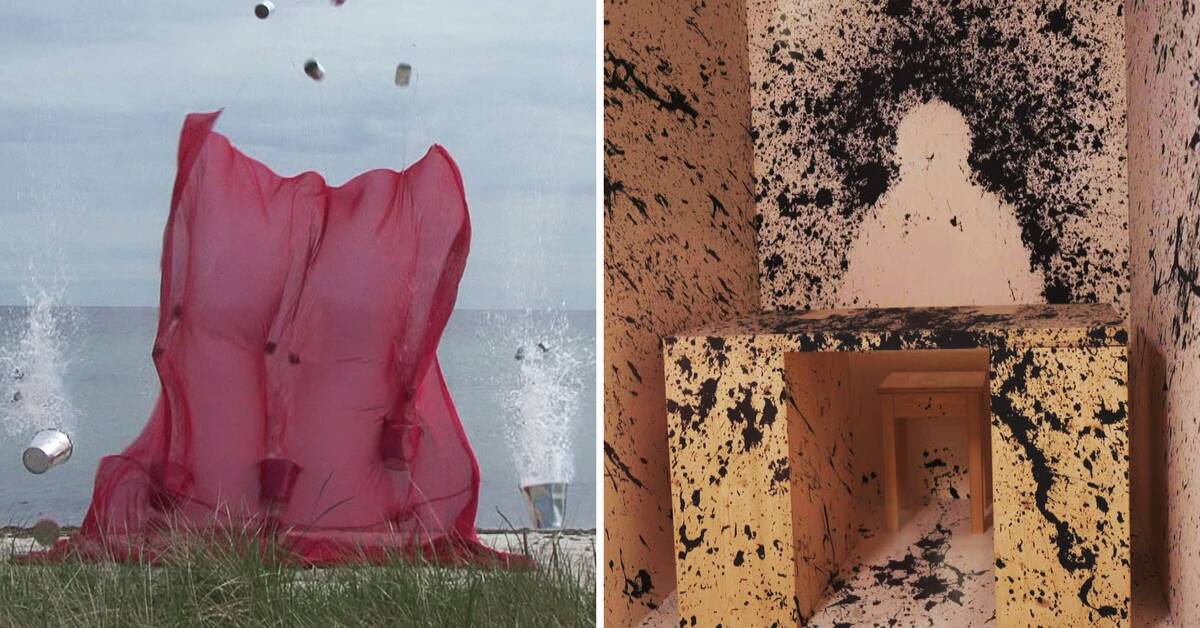Time passes, they say. But what if it doesn't? What if time behaves in completely different ways, perhaps even stands still – and it is we who live who move inside time?
Roman Signer is a Swiss artist who makes works between mischief and scientific experimentation. He calls them "action sculptures" – sculptures that happen – and the fact that they take place raises classic philosophical questions about how time behaves.
As someone who sees his work, I need to think about what time does to the objects that are in the middle of the action. It feels like the objects themselves want to try their wings, or to make an impression. Like when he puts rockets on a small house and makes it fly, or when three cans of paint spray a person.
Roman Signer also captures the four elements and tests how they behave with different objects – a shirt is splashing in a barrel of water, and the air blows around furniture. A work that perhaps looks like a fun thing has several layers of meanings if you allow yourself to stop and pause your – time – before it.
And then it is particularly smart of Signer to often let the works take place in public environments, where people pass by, such as in Pildammsparken where the exhibition continues.
Just that dead matter, stuff, behaves at all, doesn't just lie still, it's pretty wonderful. And that begs the question: when does the will come into the world? When does the will enter you, or into an event?
For me, four kayaks set up belly to belly, pair of couples, is the most poetic work in the exhibition. They are empty – empty pairs – leaning towards each other and aiming for the sky. Roman Signer has said that it was after the death of a friend that the kayak became a recurring object for him. Perhaps the stillness of the kayaks is a kind of tombstone, or a longing for an element that we humans cannot capture with scientific experiments.

